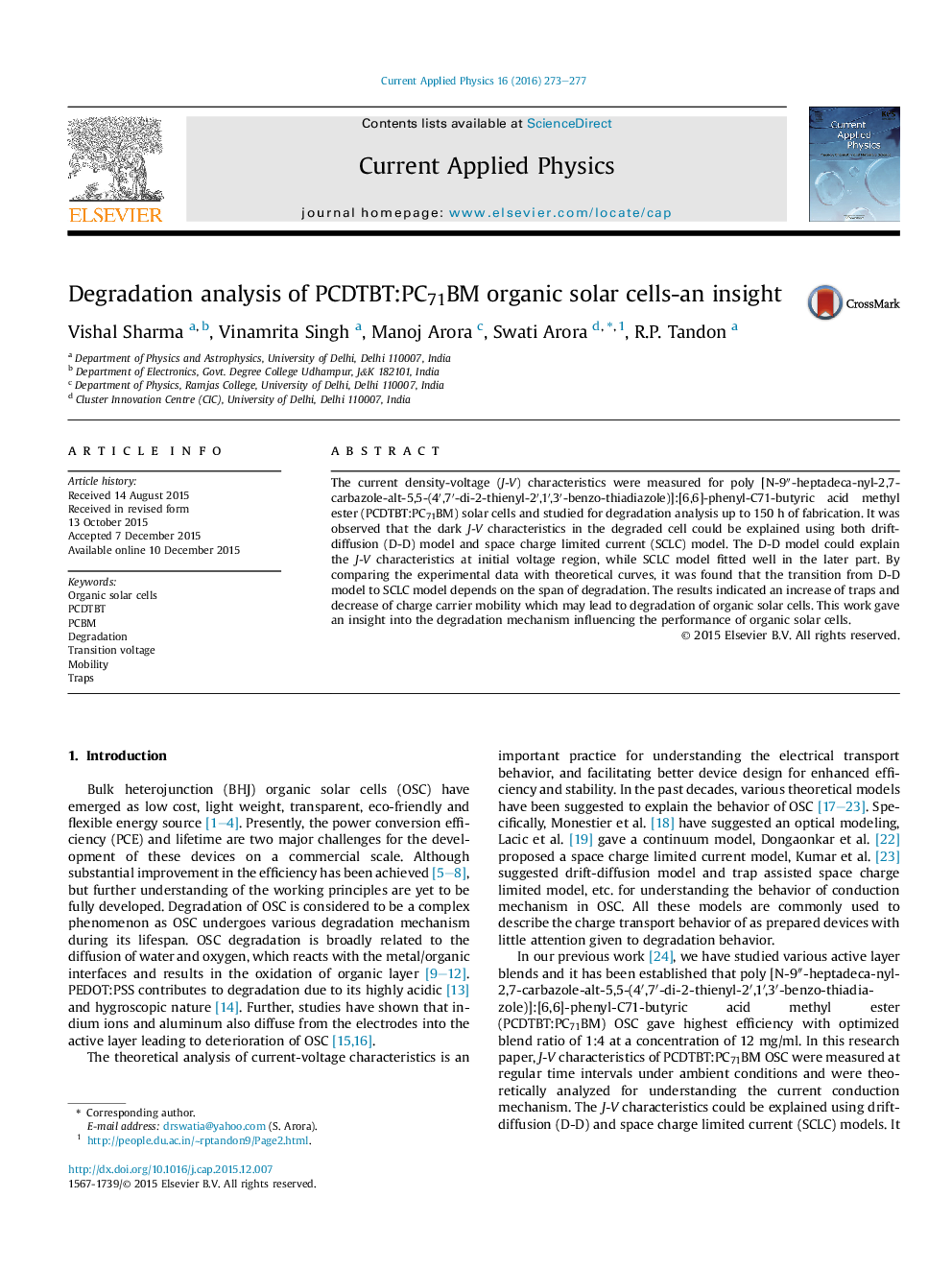| کد مقاله | کد نشریه | سال انتشار | مقاله انگلیسی | نسخه تمام متن |
|---|---|---|---|---|
| 1785799 | 1023395 | 2016 | 5 صفحه PDF | دانلود رایگان |

• Degradation analysis of PCDTBT:PCBM based organic solar cells have been studied.
• Drift Diffusion (DD) and SCLC models are used to explain the J-V characteristics.
• Trap density increases with degradation time as inferred from SCLC model.
• Mobility of charge carriers decreases with time due to the increase of trap density.
• Voltage at which transition from DD to SCLC mechanism occurs decreases with time.
The current density-voltage (J-V) characteristics were measured for poly [N-9″-heptadeca-nyl-2,7-carbazole-alt-5,5-(4′,7′-di-2-thienyl-2′,1′,3′-benzo-thiadiazole)]:[6,6]-phenyl-C71-butyric acid methyl ester (PCDTBT:PC71BM) solar cells and studied for degradation analysis up to 150 h of fabrication. It was observed that the dark J-V characteristics in the degraded cell could be explained using both drift-diffusion (D-D) model and space charge limited current (SCLC) model. The D-D model could explain the J-V characteristics at initial voltage region, while SCLC model fitted well in the later part. By comparing the experimental data with theoretical curves, it was found that the transition from D-D model to SCLC model depends on the span of degradation. The results indicated an increase of traps and decrease of charge carrier mobility which may lead to degradation of organic solar cells. This work gave an insight into the degradation mechanism influencing the performance of organic solar cells.
Journal: Current Applied Physics - Volume 16, Issue 3, March 2016, Pages 273–277